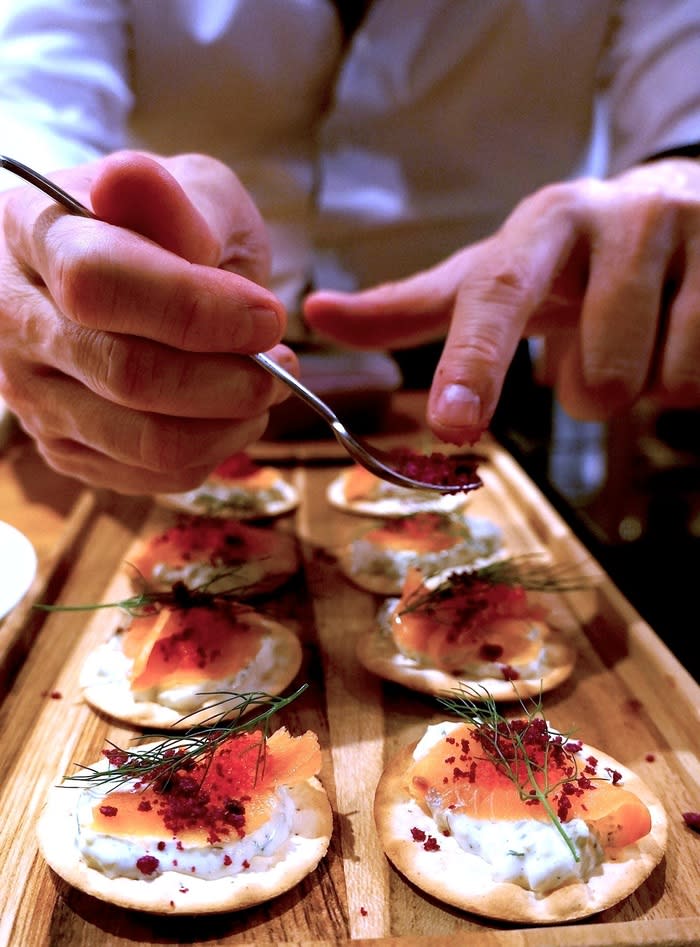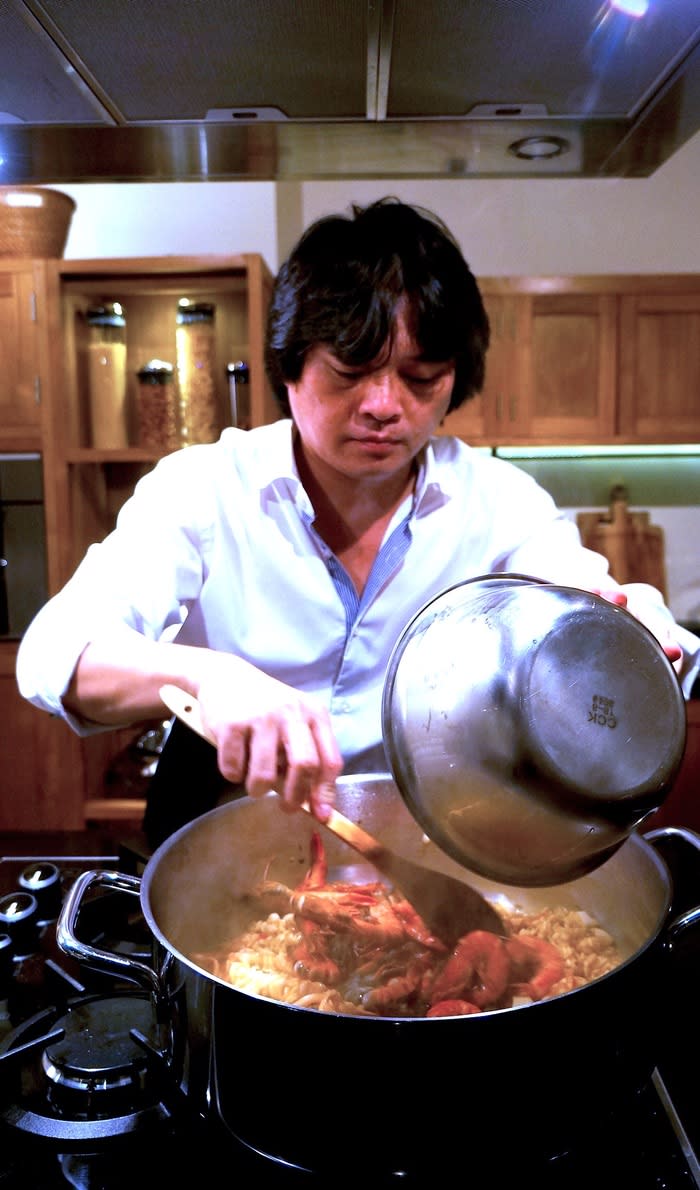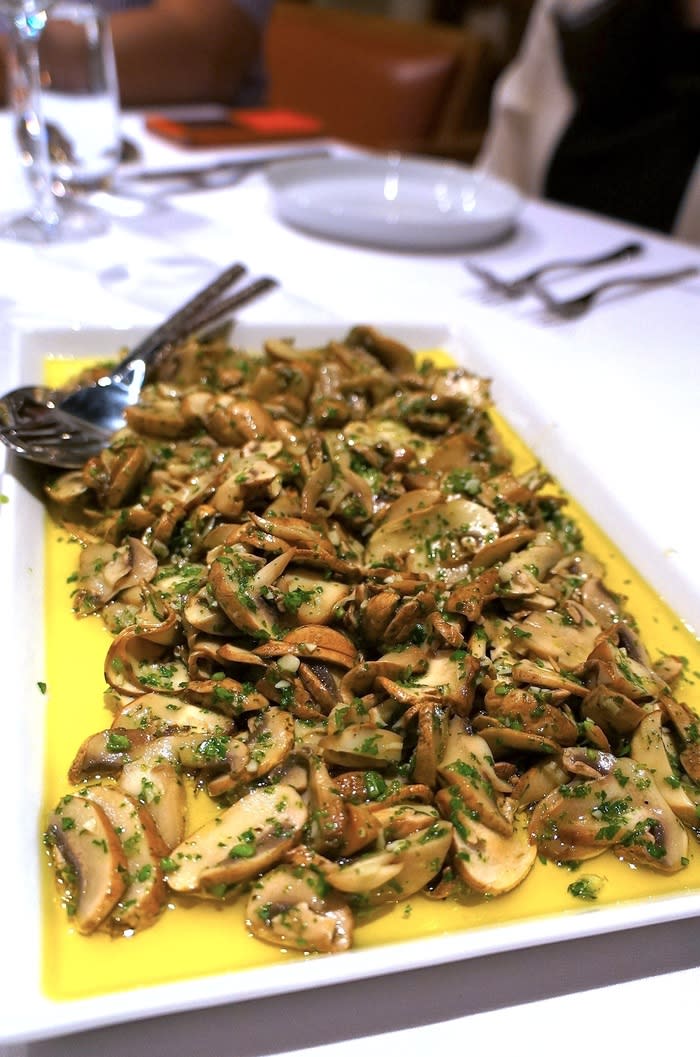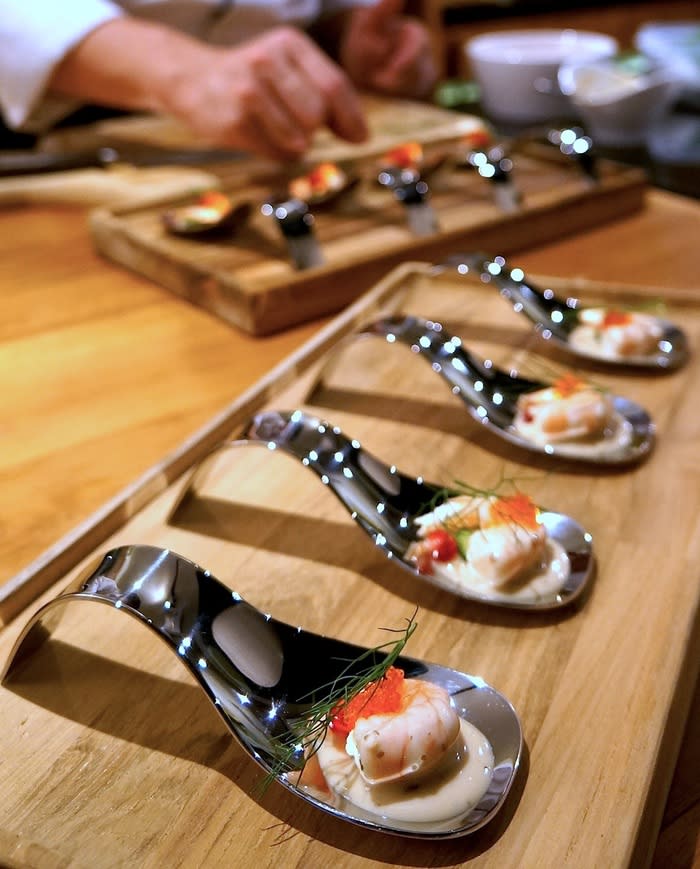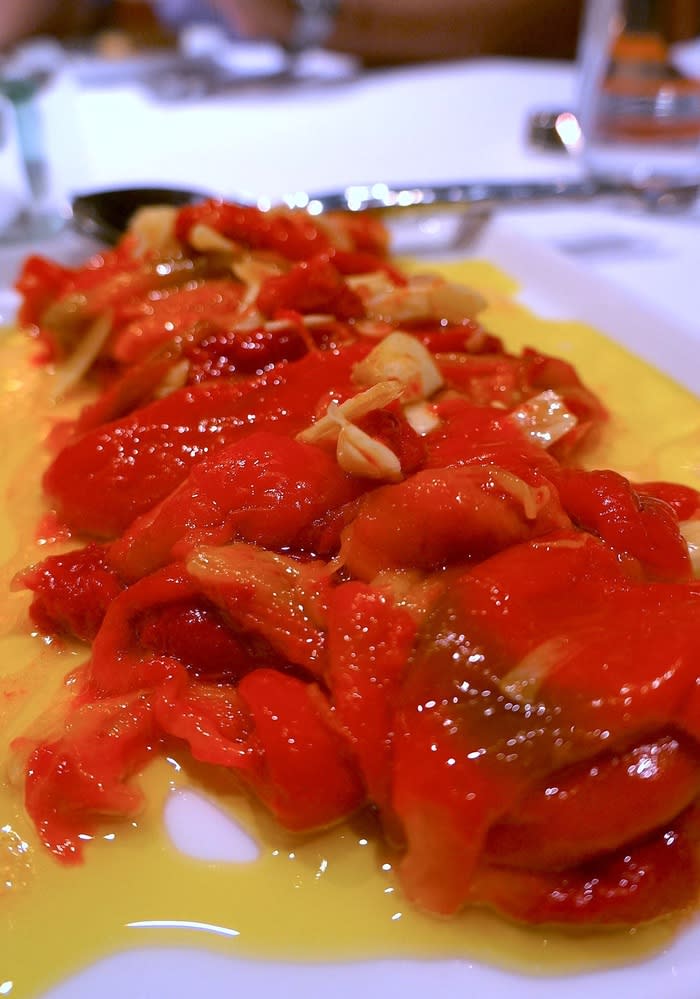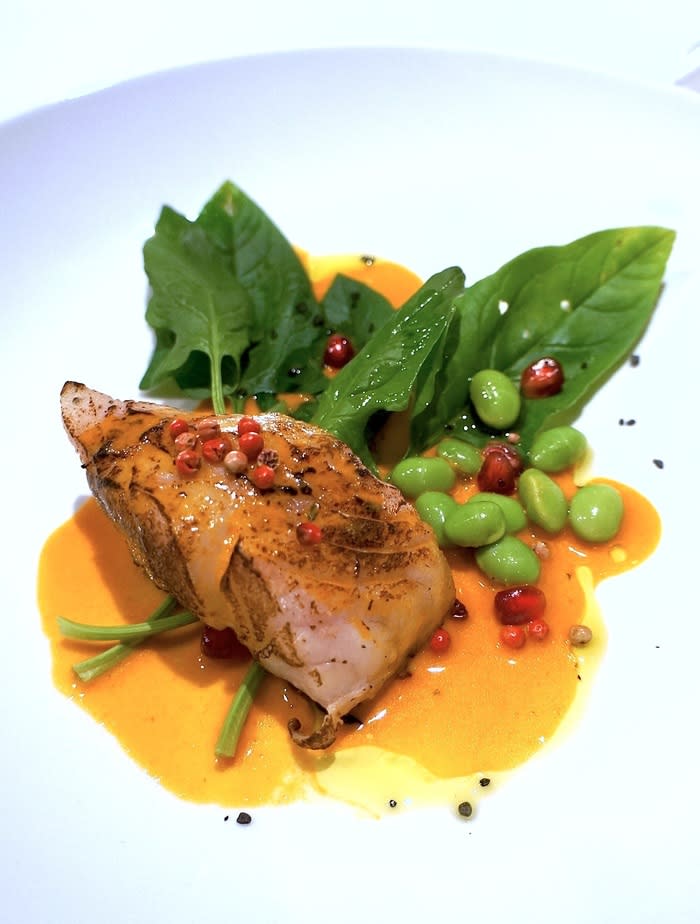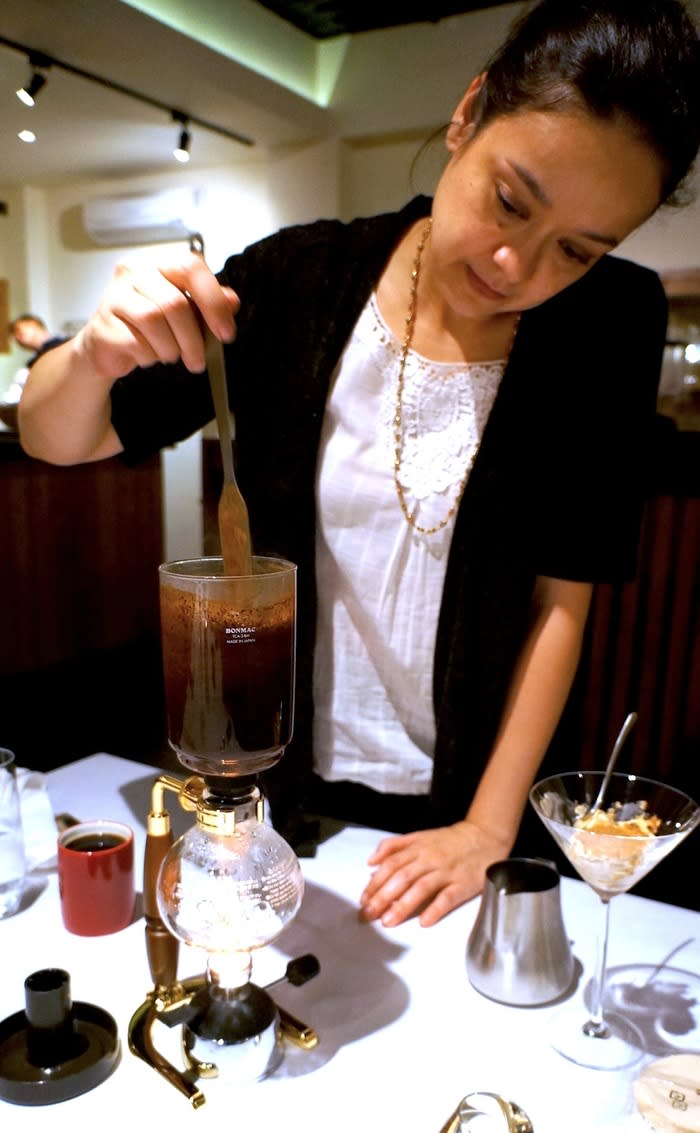Javanegra Cooking Atelier: A passion for food combines home cooking with fine dining
In Spain there is a saying — A beber y a tragar, que el mundo se va a acabar — that means “Eat, drink and be merry, for tomorrow we die,” which says a lot about how the Spanish cherish their meals.
This inspired one Indonesian gourmand-turned-chef to master the art of Spanish cooking.
“It was my passion for food that prompted me to start a cooking atelier and open this kitchen for private dining,” said Andra Peresthu, while stirring a giant pan of paella.
“I have never attended a formal cooking school, but I’ve been cooking since I was seven,” said the chef, who added that he is inspired by renowned Michelin-starred chef, Santi Santamaria.
Andrea is an architect who studied urban settlement in Granada, Spain, before moving to the Netherlands and later starting a boutique coffee roasting business in Jakarta with two business partners.
The business, named Javanegra and located in the Petogogan area of South Jakarta, is the result of collaborative efforts from several coffee enthusiasts and coffee growers who wished to promote good quality, sustainable coffee production in Indonesia.
“We used to cook and eat here in our humble office — of course Andrea was the one who cooked. Then we thought, why not open a cooking atelier so people can also enjoy what we’re passionate about,” said Reni Alhadad, co-founder of Javanegra.
“At this cooking atelier we do cooking classes and private dining,” she added, while pouring me a freshly roasted Sumatran Arabica coffee.
The strong coffee aroma faded slowly as Andrea added some half-cooked prawns to his pan of paella. It created an aroma reminiscent of the Mediterranean Ocean, something I’m very familiar with.
He then gave a final touch to some canapés — amuse gambita con salsa japonesa, or shrimp amuse-bouche with fish roe, Japanese salsa and a touch of pomegranate. I would say that the pomegranate gave an Iberian identity to the already familiar amuse-bouche.
“Dinner is ready,” Reni said, allowing her guests to sit down at the prepared table.
A long dining table is situated in the same room as the kitchen at the atelier. It was covered in white linen, opulent silverware, plates and wine glasses — perfectly defining fine dining, but served as though in your own kitchen.
Two more canapés arrived — smoked salmon and tuna tartare. Both were equally delicious.
Andrea then brought out big plates of tapas — champiñones al ajillo, or mushrooms sautéed with garlic, olive oil and seasoned with flat-leaf parsley, as well as pimiento a la brasa, or roasted red peppers.
“I don’t believe in decorated plating, I believe in authentic cooking and comfort food,” explained Andrea, pointing to his two tapas.
I remember exactly the same dish being cooked by my Italian host mother when I was living in Sardinia, Italy, as an exchange student. I have been trying to recreate that delicious mushroom dish ever since, but have never succeeded. I suspected I had not used the same type of mushroom, so I asked Andrea where he found the mushrooms.
“The mushrooms are local,” said the chef.
That short statement sums up Andrea’s skills in cooking. The mushrooms were very fresh — they still had a crunchy texture — and the seasonings only elevated the main ingredient without overpowering it.
Realizing that there would be more dishes to come, I stopped munching on the heavenly mushroom and moved to the red peppers. They were even better.
“The red peppers are imported,” said Reni.
“You cannot get the same sweetness from the local peppers here,” Andrea added.
I could have gone home happy after eating just the two tapas, but then I remember the mouthwatering smell of the paella.
I don’t believe in decorated plating, I believe in authentic cooking and comfort food
I could actually taste the ocean in the paella a la marinara. The arborio rice was al dente and all the juices from the seafood blended perfectly in the dish. It was somewhat like a seafood risotto, but in risotto there is usually a dominant white wine flavor, while in this dish the seafood was the star. I would suggest they could add langoustine to the dish for an extra surprise.
Then came the entrée, mero con salsa de bouillabaisse, or grouper bouillabaisse. “I purposely cooked the grouper medium, so you still get that chewy texture,” explained the chef.
Pomegranate balanced the bitterness of the bouillabaisse, while the sweet red pepper and the Hawaiian black salt added another surprise to the dish. The only thing that seemed to be awkward on plate was the raw spinach and the edamame.
We ended the dinner with tiramisu and a coffee degustation, including chili coffee — coffee planted in the same soil as chili plants — that had a strong chili flavor, as well as cold-drip coffee and expensive kopi luwak prepared using a siphon.
Perhaps this was one occasion when a ‘bitter end’ was actually a happy ending.
A private dining experience at Javanegra Cooking Atelier costs between Rp 1.2 million to Rp 1.7 million per person, depending on the menu selected.
Read also:


